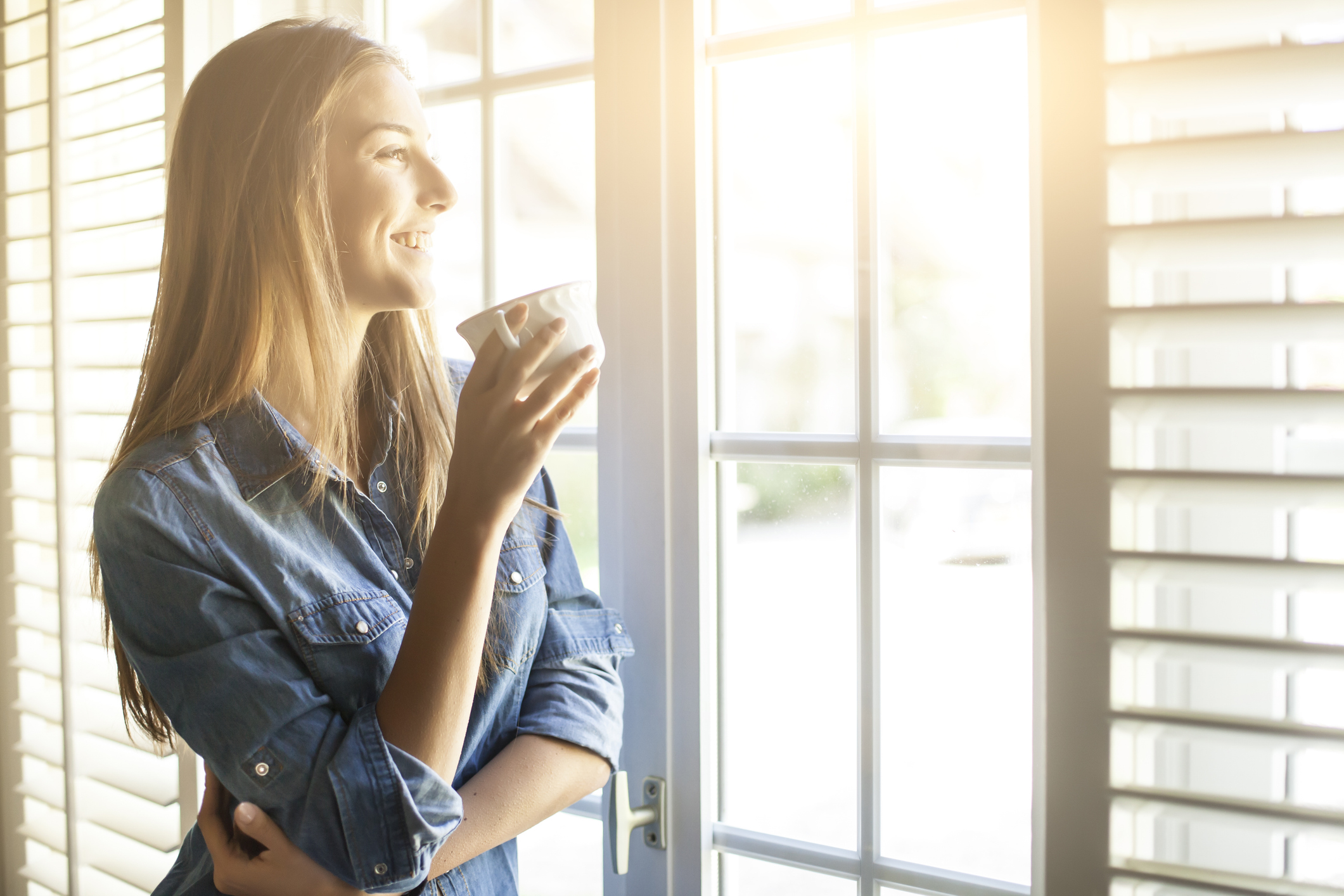How to keep a cool head in the heat
In the wake of climate change, extreme summer heat can have a serious impact on people’s health. However, there are quite a few measures that can be taken to effectively protect your home against overheating. But: Make sure to use only low-emission products inside your home.
Hot summers have become the rule rather than the exception. High temperatures of more than 30 °C are not uncommon these days, and on the so-called “dog days” temperatures soar to 35 °C and more. Extreme heat causes serious problems for many people and is harmful to their health in the long term. This is all the more true when homes and offices heat up to such a degree that staying inside becomes almost unbearable. Remedial action must be taken. Many people resort to fans or air-conditioning systems to alleviate the heat stress. Although these appliances provide a certain cooling effect, they often cause colds and muscle tension. Moreover, they consume a lot of electricity.
What are the alternatives? It is not without reason that the legislator emphasizes the importance of summer heat protection in the German Energy Act for Buildings (GEG): “Buildings are to be erected in such a way that the sun’s entry is limited by adequate structural summer heat protection in accordance with the recognized rules of technology.” There are several possibilities to protect a building from overheating. First of all, we should take a look at architecture. Buildings in the functional Bauhaus style with clean lines may be in vogue right now, but the good old roof overhang still makes sense. In summer, when the sun is high in the sky, it helps to keep the heat outside. In winter, the low sun can generate solar heat gains. Balconies can also have a similar effect.
In addition, a well-insulated building envelope helps to avoid heat stress. Insulating the facade, the roof or at least the top floor ceiling has a positive effect on the room climate. Since the building envelope can only be as good as its weakest link, it is crucial that windows and doors are also well insulated. However, windows and glass doors need further support by shading devices. Roller shutters, folding shutters, Venetian blinds or awnings protect them from too much sunlight. This is particularly important for roof windows. Shading devices can be conveniently lowered and raised with the help of drives and automatic timers. Modern solar drives help to save electricity.
Good ventilation is also essential on hot days. If you open windows and doors manually, you should do this in the early hours of the morning, preferably before sunrise, when temperatures are at their lowest. But ventilation can also be provided by controlled ventilation systems, which automatically exchange the room air.
When upgrading the energy efficiency of a building, especially when providing for heat protection in summer, a large variety of materials are used, including thermal insulation materials, vapor barriers, joint sealants, sealing tapes and many more. In the course of refurbishment projects, also wall and floor coverings are often replaced. These projects involve, among others, the use of parquet and tile adhesives, grouts, plasters and paints. Many of these building materials have a direct impact on the indoor climate and thus on the residents’ health. No matter what the product group: When selecting the required materials, consumers should pay special attention to products that are harmless to human health in order to avoid the emission of pollutants into indoor air. They should also address this point in good time to the craftsmen hired to do the job.
A certificate that consumers can put their trust in is the EMICODE® EC1 seal on the product packaging. The organization behind this seal is the GEV, the “Association for the Control of Emissions in Products for Flooring Installation, Adhesives and Building Materials”. Products that have been awarded the EMICODE® label were tested for harmful VOC emissions by independent laboratories in special test chambers. To ensure long-term compliance with the predefined limit values, the initial test is followed by regular spot checks carried out by independent experts and testing institutes without prior notification.
By carefully choosing the right products, homeowners do something for their health. In two respects: on the one hand, they protect their home from overheating, on the other, they ensure that the indoor air is free from harmful substances. The good thing about these measures is that they not only provide protection from summer heat, but also prove useful in winter by protecting your home from the cold and reducing the consumption of heating energy.

Photo: © iStock/Portishead1/GEV
Large glass panels are very popular these days. With the help of roller shutters and blinds, the amount of solar radiation can be adjusted to your needs so that the living space does not heat up too much. Please note that external shading devices are most effective.
Do You Have Questions?
If you have any questions on certain topics or want to contact us for another reason, please contact us by phone or email.
Phone: +49 (0)211 843 449 – 01
info@emicode.com
Share article on Social Media:
